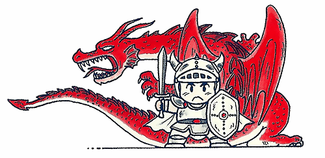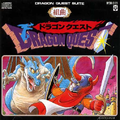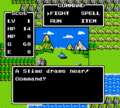Dragon Quest
| Main series games | |
|---|---|
| Dragon Quest | |
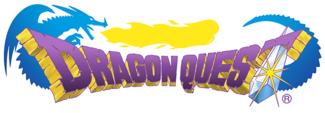 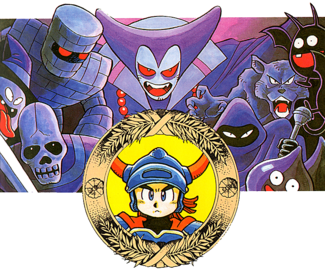
| |
| Developer(s) | Chunsoft |
| Publisher(s) | JP Enix NA Nintendo |
| Designer(s) | Yūji Horii Kōichi Nakamura Yukinobu Chida |
| Artist(s) | Akira Toriyama |
| Composer(s) | Kōichi Sugiyama |
| Series | Dragon Quest |
| Platform(s) | NES/Famicom, MSX, NEC PC-9801, Sharp X68000, Super Famicom, Game Boy Color (hybrid cartridge), Mobile phone, Wii, Android & iOS, PlayStation 4, Nintendo 3DS, Nintendo Switch |
| Release date(s) | Nintendo Entertainment System JP May 27, 1986 NA August 1989 MSX2 JP November 21, 1986 MSX JP December 18, 1986 Super Famicom JP December 18, 1993 Game Boy Color JP September 23, 1999 NA September 27, 2000 Wii JP September 15, 2011 Android & iOS JP November 8, 2013 NA September 11, 2014 EU September 11, 2014 AUS September 11, 2014 Playstation 4 & 3DS JP August 10, 2017 Nintendo Switch JP September 27, 2019 NA September 27, 2019 EU September 27, 2019 |
| Genre(s) | Console role-playing game |
| Mode(s) | Single player |
| Rating(s) | ESRB: E (Everyone) (GBC) |
| Media | NA 640-kilobit NES cartridge JP 512-kilobit Famicom cartridge GBC/SFC/MSX cartridges |
Dragon Quest (ドラゴンクエスト Doragon Kuesuto) is the original Dragon Quest game which preceded the entire Dragon Quest series. It was developed by Enix and released in 1986 in Japan for the MSX and Famicom consoles. The game was localized for North American release in 1989, but the title was changed to Dragon Warrior to avoid infringing on the trademark of the pen and paper game DragonQuest. The North American version of the game was greatly improved graphically over the Japanese original, and added a battery backed-up save feature, whereas the Japanese version used a password system. Nintendo was impressed with the Japanese sales of the title and massively overproduced the cartridge; the end result was that Nintendo gave away copies of Dragon Warrior as an incentive for subscribing to Nintendo Power, the company's in-house promotions magazine.
Dragon Quest was the first turn-based role playing game to debut on a video game console and is considered a pioneer in the development of the genre. Dragon Quest's immense success proved that RPGs had a place in the industry, and would spawn a successful franchise that would become one of the de facto standards for role playing video games.
Gameplay
Dragon Quest was developed to be simple enough for anyone to understand its intricacies, but also captivating enough to compel players to explore every inch of its digital surface.
The player controls a single character who is able to travel around the world on a quest to defeat the Dragonlord, traversing an immense country and visiting numerous towns. He can equip various weapons and armour and battle enemy monsters in one-on-one, turn-based combat. As more enemies are defeated, the Hero becomes stronger and able to explore greater distances as he completes his quest. Ultimately, the Hero must confront the Dragonlord in his citadel, marking the end of his adventure. The basic gameplay formula used in Dragon Quest would be replicated countless times in similar RPG titles on home consoles after its release.
Characters
- The Hero: A descendant of The Legendary Hero Erdrick. He arrived from an unknown location to help the land of Alefgard.
- Erdrick: He rescued Alefgard years earlier. He had left items and clues for his descendant to aid in defeating the Dragonlord.
- Lorik: The king of Tantegel, and ruler of the land of Alefgard.
- Princess Gwaelin: Daughter of King Lorik. Imprisoned in the Quagmire Cave southwest of Kol, by servants of the Dragonlord.
- Dragonlord: The villain of the story, he has stolen the Sphere of Light in order to infest Alefgard with horrid monsters.
Plot
Legacy
Influence on the Video Game Industry
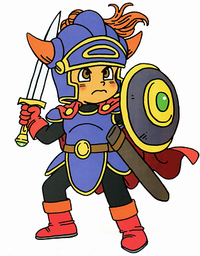
Before the release of Dragon Quest, the video game marketplace consisted of fast-paced, reflex dependent action titles. The majority of these were originally developed as arcade quarter-munchers, and retained the immense difficulty of such even when ported to a home console. Storytelling was sparse, if text was even programmed into a game, and titles relied on the player's imagination to fill in the gaps.
When Yūji Horii's dream project proved to be a smashing success, the entire perception of what a video game could be changed. Countless RPGs flooded store shelves to cash in on the newfound hype surrounding the genre, and action titles began to experiment with deeper plotlines and character interaction instead of merely pushing level complexity.
A humble title from a small publishing company changed everything for games.
Remakes
Being the original game in the series, Dragon Quest has been remade and re-released on a variety of different platforms; most notably for the Super Famicom. Most of the remakes feature localizations which differ from the original, as well as additional features such as an item/gold vault and streamlined menu system. Other changes include tweaks to the leveling system to make it easier to gain levels without excessive grinding. Most fans consider almost all remakes to be easier than the original release for this reason. See List of version differences in Dragon Quest I for a listing of version differences.
Note that only some of the remakes have been released outside of Japan. For a full list of releases and dates, visit List of games.
Sequels
Dragon Quest was closely followed by Dragon Quest II: Luminaries of the Legendary Line which met with similar success. Dragon Quest II featured the same timeline and setting as the original, a concept which was further extended into Dragon Quest III: The Seeds of Salvation. Together, the first three games comprise what is known as the Erdrick trilogy. All three games were designed for the Famicom/NES and share similar artistic styles.
Spinoffs
As the first game in the series, Dragon Quest has served as a significant influence in almost every spinoff game. In particular, many of the enemies developed for Dragon Quest (Slime, Dracky, Chimaera, etc.) are featured in almost every other game in the main series and spinoffs.
Trivia
- The stat improvement algorithms depend on the player's name, deciding if the player will be more proficient in strength, agility, or magic (MP).
- There is no party, only a single player character.
- Although his sprite changes when the princess is rescued, to show him carrying her, the princess does not participate in any battle.
- Enemies attack the hero 1-on-1, never in groups.
- There are no vehicles; one can only traverse the overworld map on foot, or by using a Chimera wing or Zoom spell to travel to Tantegel Castle.
- Tantegel is the only save location in the game. Likewise, the Zoom spell can only return to Tantegel. This is because the spell's Japanese name, rura, derives from the English word Ruler.
- Acquired weapons, armor and shields will automatically replace the previous item, which is then discarded or sold to the store. This is changed in the remakes.
- There is no equipment slot for helmets, despite the iron helmet, leather hat, and helm of Ortega being featured in official illustrations.
- Keys are consumed when used; new ones can be purchased at one of the "key houses" in Tantegel, Rimuldar, or Mercado. The first key in any quest must be purchased in Rimuldar, since the others are behind doors that require a key to open.
- There are separate shops for buying holy water, unlike later games where it is sold in item shops.
- Caves are dark, and must be lit up with a torch or Glow spell. These have limited range, which diminishes as the spell or torch wears out. The range is effectively reduced in the remakes, since the scale of the caves is larger, but the range is not increased to compensate.
- In the original versions, there are special menu commands to climb stairs and open chests (done automatically in later games), and in the Japanese version to select directions for certain commands, since characters do not have facings in these versions.
- The original Japanese Famicom and MSX versions of this game (and Dragon Quest II: Luminaries of the Legendary Line) have a "Spell of Restoration" (password system), in place of the "Imperial Scrolls of Honor" (battery save system). The password does not save current HP and MP, or the contents of the chests. So all of these will be reset on a reload.
- Whether a treasure chest has been opened or not is never recorded. By reloading the game, you can collect a chest multiple times.
- The Game Boy Color release had a more direct translation of many character and town names.
- A myth persists that the term for the heal spell, Hoimi, became the official term for heal in Japan, though this is not actually the case. Around the release of Dragon Quest IV, Enix held a public ceremony to "induct" the word into the Japanese language, but this was for publicity only, and the word is not officially recognized as a part of the Japanese language.
- Erdrick's Sword is used during an optional boss fight in Final Fantasy XII and is also the prize for winning that battle. This also marks the first time the mix of Final Fantasy and Dragon Quest has happened in the light of both Square and Enix merging to be noticed in the Western world (though the crossover had happened a few times previously in the Fortune Street series).
Soundtrack
Kōichi Sugiyama served as composer for the soundtrack. He would go on to write most of the music for the entire Dragon Quest series. Dragon Quest I's symphonic suite was bundled with Dragon Quest II's symphonic suite and a disc of original compositions as Dragon Quest in Concert. Here is the track listing for the Dragon Quest I portion of that release:
- Overture March (序曲/Overture) (3:59)
- Château Ladutorm (ラダトーム城/Castle Ladutorm) (3:25)
- People (街の人々/People of the Town) (3:36)
- Unknown World (広野を行く/Going in Plain) (2:07)
- Fight (戦闘/Fight) (2:12)
- Dungeons (洞窟/Cave) (3:40)
- King Dragon (竜王/King Dragon) (3:08)
- Finale (フィナーレ/Finale) (2:40)
Gallery
Videos
